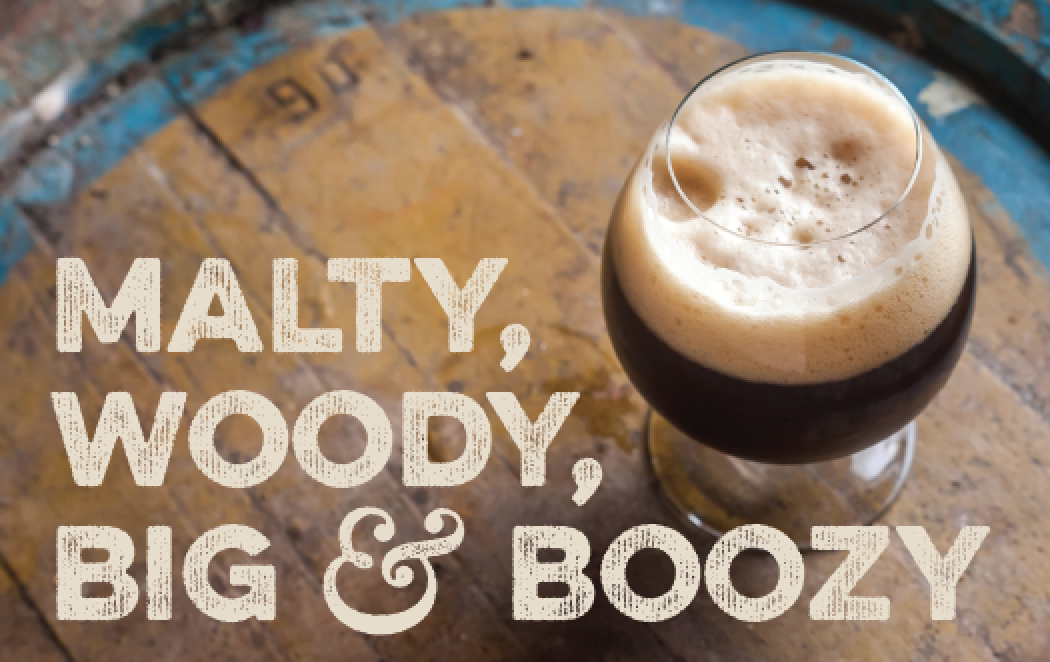There are certain beers that seem ideally suited to each season: fresh, light saisons and malty maibocks are perfect for spring; sessionable lagers, citrusy hazy ales and fruity sours can’t be beat in the hot days of summer; while autumn is all about fresh hops, pumpkin beers and Oktoberfest märzens.
And then there are the malty, woody, big and boozy beers that many breweries release in the darkest depths of winter: hefty barleywines and richly extravagant imperial stouts that turn the alcohol dial not just to 11, but often close to 12%, or even beyond. These small-batch behemoths demand extra care and attention from the brewers who make them—some spend time soaking up even more alcohol in bourbon barrels—and when they are finally released, beer geeks obsess over them, often buying several bottles to age in their cellars, building up verticals to compare vintages in coming years, and debating which year’s version offers the best flavour profile.
The English barleywine tradition dates back to the 1700s when brewers intended it to replace wine at the dinner table because of conflicts between England and wine-producing countries such as France and Spain. It was brewed to over 10% ABV and then laid down in wood for a year or more to mellow its character. Modern interpretations by craft brewers are often much hoppier than the original would have been, even dry-hopped much like a contemporary IPA.
Russian imperial stouts originated in 18th century England as well, brewed as “extra stout porters” for the imperial court of Czarina Catherine the Great in St. Petersburg. They proved to be popular both in Russia and at home in England, and continued to be brewed well into the 20th century. Contemporary craft breweries typically make them as dark, thick and rich as possible. The happy discovery that the roasty, chocolatey and coffee flavours in these big stouts taste even better with a bit of whisky added to the mix has led many brewers to age them in used bourbon barrels as well.
One of the leading producers of these styles in B.C. is Victoria’s Driftwood Brewery, which has produced its Singularity Russian imperial stout and Old Cellar Dweller barleywine annually since 2011. Put simply, co-founder and so-called “Wizard of Wort” Jason Meyer says, “We like making them because we like drinking them.”
Meyer acknowledges that these big, boozy beers are challenging to brew. High-gravity fermentations put extra stress on yeast and require longer conditioning periods.

“Extraction efficiency is terrible when you’re making super high-gravity beers,” he explains. “You’re leaving a shit-ton of sugar behind in the mash tun because you’re usually sparging only minimally.”
And then there’s the artificial limit of 12% ABV, created by federal excise duties—above that, the tax rate jumps considerably. With Old Cellar Dweller, Meyer tries to brew it as close to 11.8% as possible.
“We’ve got an alco-meter that we paid handsomely for to make sure that we are not over the duty threshold,” he says.
Singularity is even more of a wild card because it is aged in single-use bourbon barrels, which add additional alcohol along with flavour characteristics. Driftwood favours Woodford Reserve Double Oaked bourbon barrels.
“They’ve been showing up every year nice and wet, not leaking, reeking of booze,” Meyer says. “That’s really what we’re looking for: we want them to smell heady and boozy like they just got drained the day before.”
Singularity sits in these barrels for about six weeks, just long enough to gather as much bourbon character as possible without too much tannin.
Kent Donaldson, co-owner of Whitetooth Brewing in Golden, attended a beer festival in Sweden in 2015 where he tasted an imperial stout unlike anything he’d had before.
“The way it was described to me over there was that all the farms would grow their own malt and kiln it over an open flame, so it was invariably smoked, and then they used juniper boughs as a filter bed. The combination of the smoke and juniper berries seems to go together so well.”
When he got back he sat down with Whitetooth’s brewer, Evan Cronshaw, and described it to him, hoping he could re-create it.
“He pretty well nailed it right out of the gate,” Donaldson says. “It’s such a big beer but it’s super smooth. It’s got a subtle smoke, but then astringency from the juniper berries. So viscous you could almost stand a straw up in it.”
The result, Truth Dare Consequence Nordic Imperial Stout (10% ABV), is the current reigning champion in its category at both the B.C. Beer Awards and Canadian Brewing Awards. It’s an annual release that is very popular at the brewery.
“We limit it to one 300-mL glass because we find it’s just over the top for some people. You have to be really careful with it. It is quite the punch in the head.”
Sounds fantastic! Too bad it’s only available in Golden, but then again, maybe it’s time to plan a trip there this winter. I hear the skiing is pretty good there…
Look for these big and boozy beers from B.C. breweries
Barleywines
Howe Sound Brewing // Woolly Bugger
Driftwood Brewery // Old Cellar Dweller
Central City // Thor’s Hammer
Sooke Brewing Co. // Barleywine
Persephone Brewing // Barleywine
Russian Imperial Stouts
Bomber Brewing // Russian Imperial Stout
Dead Frog Brewing // Commander
Driftwood Brewery // Singularity
Howe Sound Brewing // Pothole Filler, Megadestroyer
Moody Ales // Russian Imperial Stout
Parallel 49 Brewing // Russian Imperial Stout
Strange Fellows Brewing // Boris
Twin Sails Brewing // Str8 Flexin





